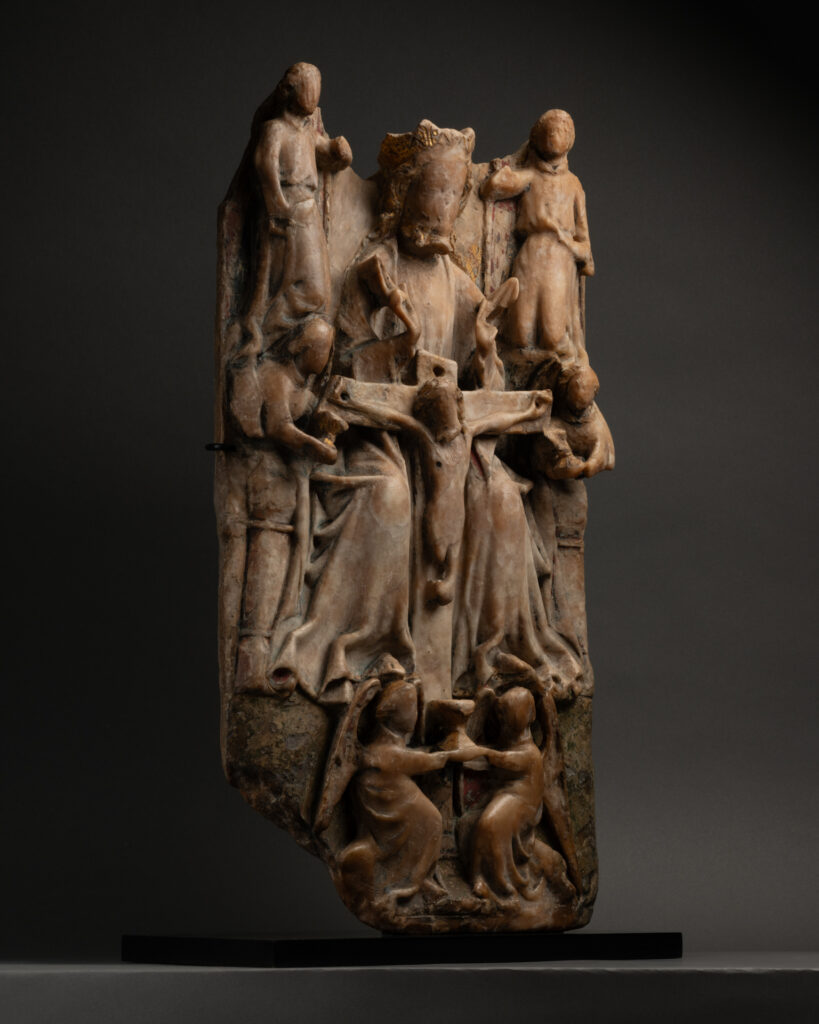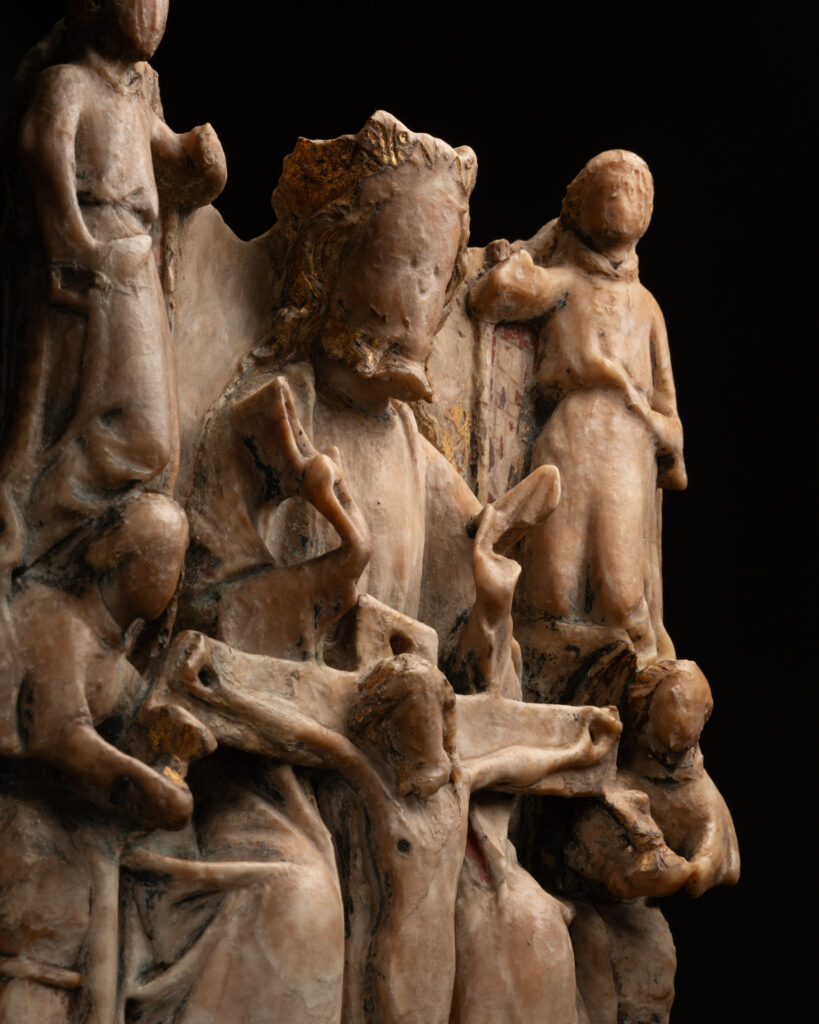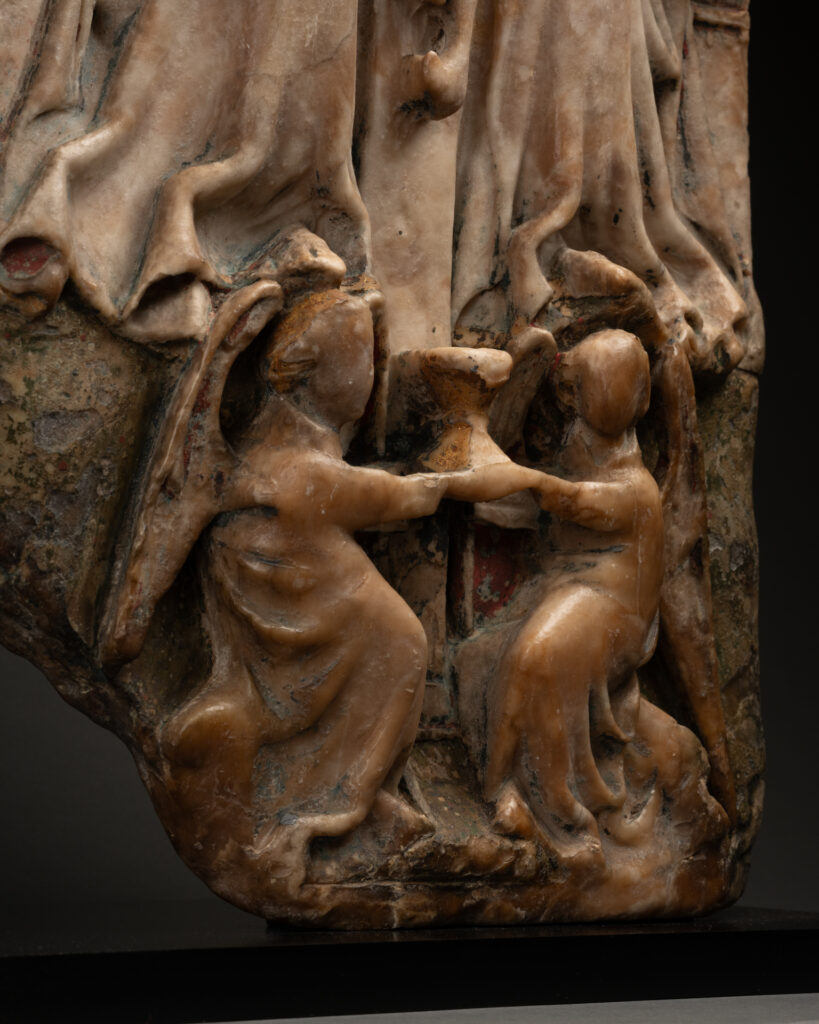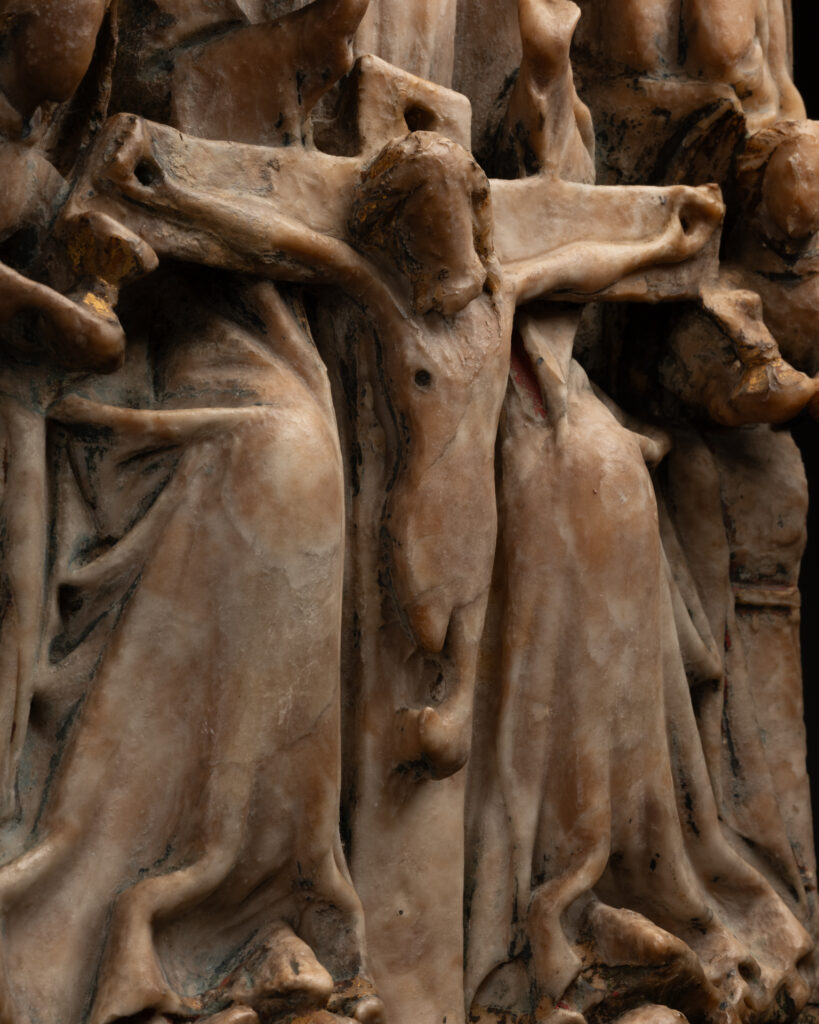This magnificent relief depicting the Trinity is an exemplary example of alabaster production in medieval England.
From the 14th century onwards, England became a major center of alabaster production. From quarries in the Midlands, alabaster is a specialty of Nottingham artisans. In the 15th century, the production of small sculpted and painted panels mainly concerned images for private devotion, or elements for altarpieces. These works were widely exported to the continent, and contributed to the renown of the Nottingham workshops. Following stereotyped models, these reliefs are then recognizable by their iconographic subjects, the lean forms of the figures represented, the conventional faces and the dry, rigid draperies.
The work we present here is a perfect example of this type of English production.
This sculpture can be divided into three parts. The first concerns the six symmetrical figures on either side of the relief. Two of them are located in the upper part of the relief, with their heads turned towards the inside of the composition, their left arms raised and their knees bent. In their hands, they seem to be holding two objects that have not been preserved. They both wear long robes and sport wings.
Two other angels are shown in the middle of the composition, on either side of the Cross. Depicted in bust form, the two figures collect Christ’s blood using small chalices. Finally, the last two angels face each other, located in the lower part of the composition, below the Cross. Shown kneeling, the two angels also hold a chalice in their hands, collecting Christ’s blood.
The second part of the relief features a massive representation of God the Father, seated on a throne. He wears a crown on his head, rendered in gold leaf, as do his golden hair and beard. He wears a crown on his head, rendered in gold leaf, as do his golden hair and beard. God wears long clothes with heavy folds.
Finally, the last part concerns Christ, situated between his Father’s legs, shown dead on the Cross, with golden hair, long arms and bent legs.
Scenes evoking the Trinity are often found in this Nottingham production. Usually divided into three registers, it shows God the Father seated on a throne, hands raised in a gesture of blessing. It is flanked by two thurifer angels (i.e. incense-bearers), shelters the crucified Christ, and dominates the angels collecting the Son’s blood.




